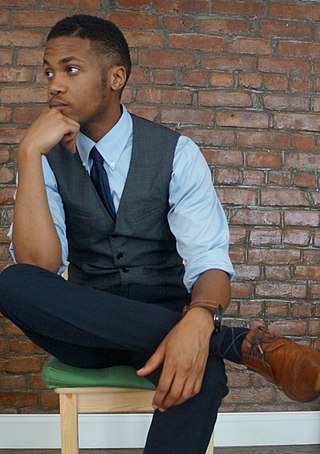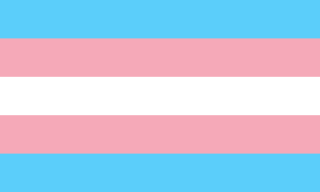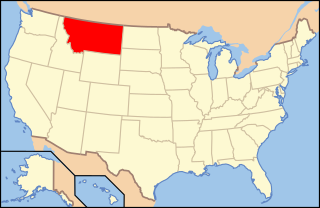
Transphobia consists of negative attitudes, feelings, or actions towards transgender people or transness in general. Transphobia can include fear, aversion, hatred, violence or anger towards people who do not conform to social gender roles. Transphobia is a type of prejudice and discrimination, similar to racism, sexism, or ableism, and it is closely associated with homophobia. Transgender people of color can experience many different forms of discrimination simultaneously.
The following outline is provided as an overview of and topical guide to transgender topics.

A trans man is a man who was assigned female at birth. Trans men have a male gender identity, and many trans men choose to undergo surgical or hormonal transition, or both, to alter their appearance in a way that aligns with their gender identity or alleviates gender dysphoria.

Violence against transgender people includes emotional, physical, sexual, or verbal violence. The term has also been applied to hate speech directed at transgender people and at depictions of transgender people in the media that reinforce negative stereotypes about them. Trans and non-binary gender adolescents can experience bashing in the form of bullying and harassment. When compared to their cisgender peers, trans and non-binary gender youth are at increased risk for victimisation, which has been shown to increase their risk of substance abuse.
Gender expression, or gender presentation, is a person's behavior, mannerisms, and appearance that are socially associated with gender, namely femininity or masculinity. Gender expression can also be defined as the external manifestation of one's gender identity through behavior, clothing, hairstyles, voice, or body characteristics. Typically, people think about a person's gender expression in terms of masculinity and femininity, but there are many ways to mix both feminine and masculine in identity. A person's gender expression may or may not match their assigned sex at birth. This includes gender roles, and accordingly relies on cultural stereotypes about gender. It is distinct from gender identity.
The gender binary is the classification of gender into two distinct forms of masculine and feminine, whether by social system, cultural belief, or both simultaneously. Most cultures use a gender binary, having two genders.

Lesbian, gay, bisexual, and transgender (LGBT) people in Pakistan face legal and social difficulties compared to non-LGBT persons. Pakistani law prescribes criminal penalties for same-sex sexual acts. The Pakistani Penal Code of 1860, originally developed under the British Raj, criminalises sodomy with possible penalties of prison sentences from two years to a life sentence and fines. Despite its illegality, homosexual acts are only occasionally prosecuted by authorities in Pakistan. Other morality and public order provisions in the Penal Code are however used to target LGBT Pakistanis.

Kathoey or katoey is an identity used by some people in Cambodia, Laos and Thailand, whose identities in English may be best described as transgender women in some cases, or effeminate gay men in other cases. These people are not traditionally transgender, however are seen as a third sex, being one body containing two souls. Transgender women in Thailand mostly use terms other than kathoey when referring to themselves, such as phuying. A significant number of Thai people perceive kathoey as belonging to a separate sex, including some transgender women themselves.

A transgender person is someone whose gender identity differs from that typically associated with the sex they were assigned at birth. Some transgender people who desire medical assistance to transition from one sex to another identify as transsexual. Transgender, often shortened as trans, is also an umbrella term; in addition to including people whose gender identity is the opposite of their assigned sex, it may also include people who are non-binary or genderqueer. Other definitions of transgender also include people who belong to a third gender, or else conceptualize transgender people as a third gender. The term may also include cross-dressers or drag kings and drag queens in some contexts. The term transgender does not have a universally accepted definition, including among researchers.
Discrimination against people with HIV/AIDS or serophobia is the prejudice, fear, rejection, and stigmatization of people with HIV/AIDS. Marginalized, at-risk groups such as members of the LGBTQ+ community, intravenous drug users, and sex workers are most vulnerable to facing HIV/AIDS discrimination. The consequences of societal stigma against PLHIV are quite severe, as HIV/AIDS discrimination actively hinders access to HIV/AIDS screening and care around the world. Moreover, these negative stigmas become used against members of the LGBTQ+ community in the form of stereotypes held by physicians.

Lesbian, gay, bisexual, and transgender (LGBT) persons in the U.S. state of Montana may face some legal challenges not experienced by non-LGBT residents. Same-sex sexual activity has been legal in Montana since 1997. Same-sex couples and families headed by same-sex couples are eligible for all of the protections available to opposite-sex married couples, as same-sex marriage has been recognized since November 2014. State statutes do not address discrimination on the basis of sexual orientation and gender identity; however, the U.S. Supreme Court's ruling in Bostock v. Clayton County established that employment discrimination against LGBT people is illegal under federal law. A number of cities also provide protections in housing and public accommodations.

Transmisogyny, otherwise known as trans-misogyny and transphobic misogyny, is the intersection of transphobia and misogyny as experienced by trans women and transfeminine people. The term was coined by Julia Serano in her 2007 book Whipping Girl to describe a particular form of oppression experienced by trans women. In an interview with The New York Times, Serano explores the roots of transmisogyny as a critique of feminine gender expressions which are "ridiculed in comparison to masculine interests and gender expression."
Discrimination against non-binary people, people who do not identify exclusively as male or female, may occur in social, legal, or medical contexts.

Discrimination against gay men, sometimes called gayphobia, is a form of homophobic prejudice, hatred, or bias specifically directed toward gay men, male homosexuality, or men who are perceived to be gay. This discrimination is closely related to femmephobia, which is the dislike of, or hostility toward, individuals who present as feminine, including gay and effeminate men. Discrimination against gay men can result from religion, prejudicial reactions to one's feminine mannerisms, styles of clothing, and even vocal register. Within the LGBT-community, internalized issues around meeting social expectations of masculinity have been found among gay, bisexual, and transgender men. Gayphobia is misandry that intersects with homophobia. It is analogous to lesbophobia.
Transgender inequality is the unequal protection received by transgender people in work, school, and society in general. Transgender people regularly face transphobic harassment. Ultimately, one of the largest reasons that transgender people face inequality is due to a lack of public understanding of transgender people.
Transgender Awareness Week, observed November 13 to November 19, is a one-week celebration leading up to the Transgender Day of Remembrance (TDoR), which memorializes victims of transphobic violence. TDoR occurs annually on November 20, when transgender advocates raise awareness of the transgender community through education and advocacy activities.

The following outline offers an overview and guide to LGBT topics.

The Rights of Transgender Persons Bill, 2014 is a proposed Act of the Parliament of India which seeks to end the discrimination faced by transgender people in India. The Bill was passed by the upper house Rajya Sabha on 24 April 2015. It was introduced in the lower house Lok Sabha on 26 February 2016.
This article addresses the legal and regulatory history of transgender and transsexual people in the United States including case law and governmental regulatory action affecting their legal status and privileges, at the federal, state, municipal, and local level, and including military justice as well.
Discrimination against transgender men and transmasculine individuals, sometimes referred to as transandrophobia, anti-transmasculinity, or transmisandry, is a similar concept to transmisogyny and discrimination against non-binary people. Transmisogyny, discrimination against transgender men and discrimination against nonbinary people are types of transphobia which affect trans women, trans men and nonbinary people respectively.










